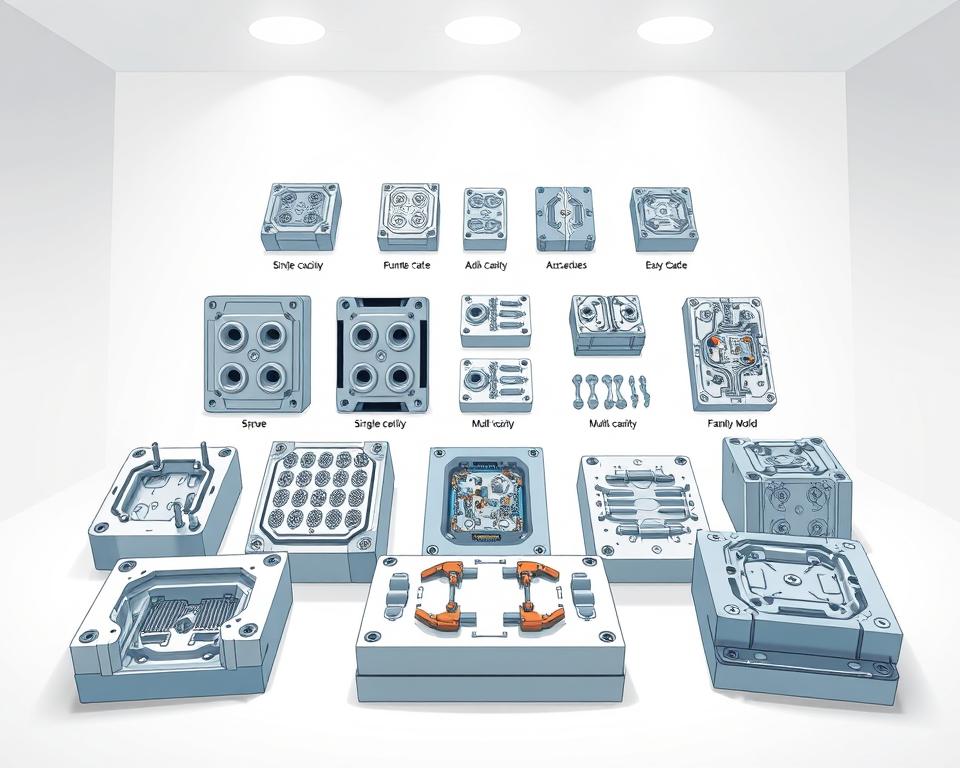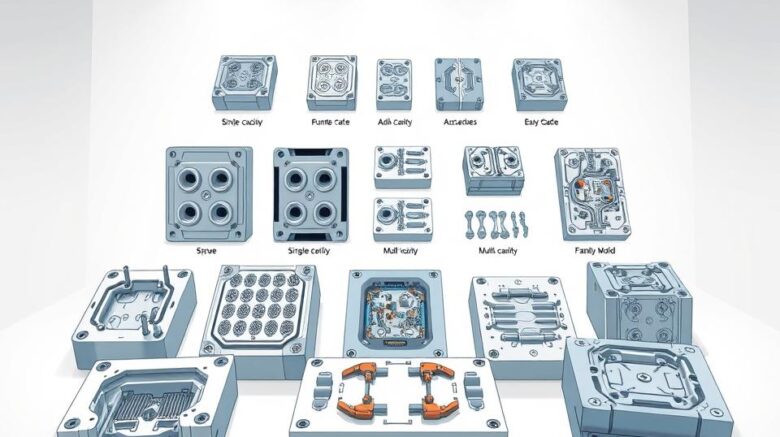The Ultimate Guide to China Injection Molding Sourcing
The important meeting has recently finished, your new product is a go, the timeline is aggressive, and funding is, to put it mildly, limited. And suddenly someone—perhaps your superior or the finance head—says the fateful words that make any project manager’s heart skip a beat: “We should look at sourcing this from China.”
Naturally, you agree. On paper, it’s logical. Savings can be substantial. But your mind is already racing. You’ve heard the stories, haven’t you? Quality failures, endless communication gaps, shipments arriving months late and nothing like the prototype. It’s like balancing on a tightrope between a massive cost advantage and project disaster.
But here’s the catch. Procuring plastic mold company needn’t be a roll of the dice. It’s no different from any structured project. And as with any project, success depends on your methodology. It’s less about finding the absolute cheapest quote and more about finding the right partner and managing the process with your eyes wide open. Ignore the nightmare anecdotes. Here’s a practical playbook to nail it.

Step One: Do Your Homework
Before you even whisper the word “supplier” or open a browser tab to Alibaba, you need to get your own house in order. Truthfully, over fifty percent of offshore sourcing issues originate in an unclear project brief. You cannot expect overseas partners to interpret your unspoken requirements. It’s akin to asking someone to price-build “a structure” with no details. You’ll get wildly varied quotes that are useless.
Your goal is to create a Request for Quotation, or RFQ, package that is so clear, so detailed, that it’s nearly impossible to misinterpret. This package is your project’s foundation.
So, what goes in it?
Begin with 3D CAD models. These are non-negotiable. Provide files in common formats (e.g., STEP, IGS) to prevent import issues. This is the authoritative CAD geometry.
But 3D isn’t enough. Add comprehensive 2D plans. This is where you call out the stuff that a 3D model can’t communicate. Think tolerances, material grades, finish specs, and any feature-critical notes. Any seal surfaces or critical hole sizes must be clearly labeled.
After that, material choice. Don’t just say “Plastic.” Even “ABS” alone is too vague. Get precise. Call out SABIC Cycolac MG38 (black), for example. Why? Because resin grades number in the thousands. Naming the precise grade locks in the mechanical, thermal, and aesthetic properties you need with what is plastic mold.
Your supplier might propose substitutes, but you must set the baseline.
Finally, include the business details. What’s your forecasted annual volume (EAU)? They need clarity: is it 1,000 total shots or a million units per annum? Cavity count, tooling cost, and per-unit pricing depend on volume.
The Great Supplier Hunt
With your RFQ perfected, who gets your RFQ? Online sourcing is global but crowded. Finding suppliers is simple; finding quality ones is tough.
You’ll probably kick off on Alibaba or Made-in-China. They offer breadth but not depth. Use them to build a shortlist, not the final list. Narrow your pool to about a dozen promising firms.
Still, you must dig deeper. Perhaps hire a local sourcing specialist. Yes, they take a cut. But a reputable agent brings pre-screened factories. They bridge language and cultural gaps. On your first run, this is like insurance. Think of it as insurance for your project timeline.
Also consider trade fairs. If you have the travel budget, attending a major industry event like Chinaplas can be a game-changer. Nothing beats a face-to-face conversation. You can handle sample parts, meet the engineers, and get a gut feeling for a company in a way that emails just can’t match. And don’t forget the oldest trick in the book: referrals. Consult trusted colleagues. A solid referral can be more valuable than any ad.
Separating Real Suppliers from Pretenders
With your RFQ dispatched to dozens of firms, estimates roll in. Some prices will undercut logic, others will shock you. Your task is to filter them down to 2–3 credible finalists.
What’s the method? It involves both metrics and gut feel.
Begin with responsiveness. Is their turnaround swift and concise? Can they handle detailed English exchanges? But here’s the real test: Are they asking you intelligent questions? Top vendors will critique and inquire. Example: “Should we add draft here for better ejection?” or “Your tolerance may require extended CMM time—okay?” That’s a huge positive sign. It proves their expertise and involvement. Anyone who simply agrees to all specs is a red flag.
Next, dig into their technical capabilities. Get their tooling inventory. More importantly, ask for case studies of parts they’ve made that are similar to yours in size, complexity, or material. If you’re making a large, complex housing, you don’t want a shop that specializes in tiny gears.
Next up: the factory audit. Skipping this is a mistake. Just as you interview hires, audit suppliers. You can either go yourself or, more practically, hire a third-party auditing firm in China to do it for you. They’ll send a local inspector to the factory for a day. They will verify the company is real, check their quality certifications like ISO 9001, assess the condition of their machinery, and get a general feel for the operation. That small investment can save you thousands.
Converting Digital Designs into Molded Parts
You’ve selected your partner. you agree on 50% deposit to start toolmaking and 50% balance after sample sign-off. Then comes the real action.
The first thing you should get back after sending your payment is a DFM report. DFM stands for Design for Manufacturability. This is your supplier’s formal feedback on your part design. It will highlight potential issues like areas with thick walls that could sink, sharp corners that could cause stress, or surfaces without enough draft angle for clean ejection from the mold. Comprehensive DFM equals a top-tier supplier. It’s a two-way partnership. Together, you tweak the design for best manufacturability.
With DFM sign-off, toolmaking begins. Weeks on, you receive the thrilling “T1 samples shipped” notification. These represent the first trial parts. It’s your test of success.
Expect T1s to need tweaks. This is normal! There will be tiny imperfections, a dimension that’s slightly out of spec, or a blemish on the surface. You supply feedback, they tweak the tool, and T2 plastic mold samples follow. You may repeat this cycle a few times. The key for you, as the project manager, is to have this iteration loop built into your timeline from the start.
At last, you get the perfect shot. Dimensions, finish, and performance all check out. This is now the benchmark sample. You ratify it, and it becomes the quality yardstick for production.
Completing the Sourcing Journey
Getting that golden sample feels like the end, but it isn’t. Now you’re entering the mass production phase. How do you ensure that the 10,000th part is just as good as the golden sample?
You need a clear Quality Control plan. Often, you hire a pre-shipment inspection service. Use a third-party inspector again. For a few hundred dollars, they will go to the factory, randomly pull a statistically significant number of parts from your finished production run, and inspect them against your 2D drawing and the golden sample. You receive a full report with images and measurements. Once you sign off, you greenlight shipping and the last payment. This audit shields you from mass defects.
Don’t forget shipping details. Clarify your Incoterms. Does FOB apply, passing risk at the ship’s rail? Or EXW, shifting all transport to you? These details have a big impact on your final landed cost.
Sourcing from China is a marathon, not a sprint. It relies on partnership-building. See them as collaborators, not vendors. Clear communication, mutual respect, and a solid process are your keys to success. It’s a challenging project, no doubt. However, armed with this guide, you’ll secure savings and keep high standards intact. You’re ready.
